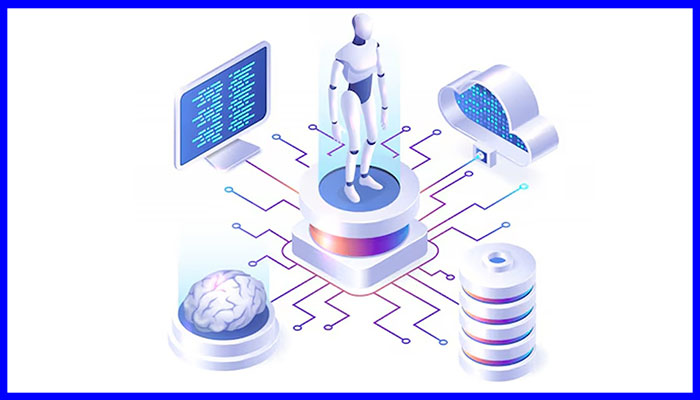Optimization Techniques For Edge AI

Edge devices often have limited computational power, memory, and storage
compared to centralised servers. Due to this, the cloud-centric ML models need
to be retargeted so that they fit in the available resource budget. Further,
many edge devices run on batteries, making energy efficiency a critical
consideration. The hardware diversity in edge devices ranging from
microcontrollers to powerful edge servers, each with different capabilities
and architectures requires different model refinement and retargeting
strategies. ... Many use cases involve the distributed deployment of numerous
IoT or edge devices, such as CCTV cameras, working collaboratively towards
specific objectives. These applications often have built-in redundancy, making
them tolerant to failures, malfunctions, or less accurate inference results
from a subset of edge devices. Algorithms can be employed to recover from
missing, incorrect, or less accurate inputs by utilising the global
information available. This approach allows for the combination of high and
low accuracy models to optimise resource costs while maintaining the required
global accuracy through the available redundancy.
The Cyber Resilience Act: A New Era for Mobile App Developers
Collaboration is key for mobile app developers to prepare for the CRA. They
should first conduct a thorough security audit of their apps, identifying and
addressing any vulnerabilities. Then, they’ll want to implement a structured
plan to integrate the needed security features, based on the CRA’s checklist.
It may also make sense to invest in a partnership with cybersecurity experts
who can more efficiently provide more insights and help streamline this
process in general. Developers cannot be expected to become top-notch security
experts overnight. Working with cybersecurity firms, legal advisors and
compliance experts can clarify the CRA and simplify the path to compliance and
provide critical insights into best practices, regulatory jargon and tech
solutions, ensuring that apps meet CRA standards and maintain innovation. It’s
also important to note that keeping comprehensive records of compliance
efforts is essential under the CRA. Developers should establish a clear
process for documenting security measures, vulnerabilities addressed, and any
breaches or other incidents that were identified and remediated.
Sometimes the cybersecurity tech industry is its own worst enemy

One of the fundamental infosec problems facing most organizations is that
strong cybersecurity depends on an army of disconnected tools and
technologies. That’s nothing new — we’ve been talking about this for years.
But it’s still omnipresent. ... To a large enterprise, “platform” is a code
word for vendor lock-in, something organizations tend to avoid. Okay, but
let’s say an organization was platform curious. It could also take many months
or years for a large organization to migrate from distributed tools to a
central platform. Given this, platform vendors need to convince a lot of
different people that the effort will be worth it — a tall task with skeptical
cybersecurity professionals. ... Fear not, for the security technology
industry has another arrow in its quiver — application programming interfaces
(APIs). Disparate technologies can interoperate by connecting via their APIs,
thus cybersecurity harmony reigns supreme, right? Wrong! In theory, API
connectivity sounds good, but it is extremely limited in practice. For it to
work well, vendors have to open their APIs to other vendors.
How to Apply Microservice Architecture to Embedded Systems

In short, the process of deploying and upgrading microservices for an embedded
system has a strong dependency on the physical state of the system’s hardware.
But there’s another significant constraint as well: data exchange. Data
exchange between embedded devices is best implemented using a binary data
format. Space and bandwidth capacity are limited in an embedded processor, so
text-based formats such as XML and JSON won’t work well. Rather, a binary
format such as protocol buffers or a custom binary format is better suited for
communication in an MOA scenario in which each microservice in the
architecture is hosted on an embedded processor. ... Many traditional
distributed applications can operate without each microservice in the
application being immediately aware of the overall state of the application.
However, knowing the system’s overall state is important for microservices
running within an embedded system. ... The important thing to understand is
that any embedded system will need a routing mechanism to coordinate traffic
and data exchange among the various devices that make up the system.
How to assess a general-purpose AI model’s reliability before it’s deployed

But these models, which serve as the backbone for powerful artificial
intelligence tools like ChatGPT and DALL-E, can offer up incorrect or
misleading information. In a safety-critical situation, such as a pedestrian
approaching a self-driving car, these mistakes could have serious
consequences. To help prevent such mistakes, researchers from MIT and the
MIT-IBM Watson AI Lab developed a technique to estimate the reliability of
foundation models before they are deployed to a specific task. They do this by
considering a set of foundation models that are slightly different from one
another. Then they use their algorithm to assess the consistency of the
representations each model learns about the same test data point. If the
representations are consistent, it means the model is reliable. When they
compared their technique to state-of-the-art baseline methods, it was better
at capturing the reliability of foundation models on a variety of downstream
classification tasks. Someone could use this technique to decide if a model
should be applied in a certain setting, without the need to test it on a
real-world dataset.
The Role of Technology in Modern Product Engineering
/pcq/media/media_files/5XXHuthlNeHT5EL5tDGP.png)
Product engineering has seen a significant transformation with the integration
of advanced technologies. Tools like Computer-Aided Design (CAD),
Computer-Aided Manufacturing (CAM), and Computer-Aided Engineering (CAE) have
paved the way for more efficient and precise engineering processes. The early
adoption of these technologies has enabled businesses to develop multi-million
dollar operations, demonstrating the profound impact of technological
advancements in the field. ... Deploying complex software solutions often
involves customization and integration challenges. Addressing these challenges
requires close client engagement, offering configurable options, and
implementing phased customization. ... The future of product engineering is
being shaped by technology integration, strategic geographic diversification,
and the adoption of advanced methodologies like DevSecOps. As the tech
landscape evolves with trends such as AI, Augmented Reality (AR), Virtual
Reality (VR), IoT, and sustainable technology, continuous innovation and
adaptation are essential.
A New Approach To Multicloud For The AI Era

The evolution from cost-focused to value-driven multicloud strategies marks a
significant shift. Investing in multicloud is not just about cost efficiency;
it's about creating an infrastructure that advances AI initiatives, spurs
innovation and secures a competitive advantage. Unlike single-cloud or hybrid
approaches, multicloud offers unparalleled adaptability and resource
diversity, which are essential in the AI-driven business environment. Here are
a few factors to consider. ... The challenge of multicloud is not simply to
utilize a variety of cloud services but to do so in a way that each
contributes its best features without compromising the overall efficiency and
security of the AI infrastructure. To achieve this, businesses must first
identify the unique strengths and offerings of each cloud provider. For
instance, one platform might offer superior data analytics tools, another
might excel in machine learning performance and a third might provide the most
robust security features. The task is to integrate these disparate elements
into a seamless whole.
How Can Organisations Stay Secure In The Face Of Increasingly Powerful AI Attacks
One of the first steps any organisation should take when it comes to staying
secure in the face of AI-generated attacks is to acknowledge a significant
top-down disparity between the volume and strength of cyberattacks, and the
ability of most organisations to handle them. Our latest report shows that
just 58% of companies are addressing every security alert. Without the right
defences in place, the growing power of AI as a cybersecurity threat could see
that number slip even lower. ... Fortunately, there is a solution: low-code
security automation. This technology gives security teams the power to
automate tedious and manual tasks, allowing them to focus on establishing an
advanced threat defence. ... There are other benefits too. These include the
ability to scale implementations based on the team’s existing experience and
with less reliance on coding skills. And unlike no-code tools that can be
useful for smaller organisations that are severely resource-constrained,
low-code platforms are more robust and customisable. This can result in easier
adaptation to the needs of the business.
Time for reality check on AI in software testing

Given that AI-augmented testing tools are derived from data used to train AI
models, IT leaders will also be more responsible for the security and privacy
of that data. Compliance with regulations like GDPR is essential, and robust
data governance practices should be implemented to mitigate the risk of data
breaches or unauthorized access. Algorithmic bias introduced by skewed or
unrepresentative training data must also be addressed to mitigate bias within
AI-augmented testing as much as possible. But maybe we’re getting ahead of
ourselves here. Because even with AI’s continuing evolution, and autonomous
testing becomes more commonplace, we will still need human assistance and
validation. The interpretation of AI-generated results and the ability to make
informed decisions based on those results will remain a responsibility of
testers. AI will change software testing for the better. But don’t treat any
tool using AI as a straight-up upgrade. They all have different merits within
the software development life cycle.
Overlooked essentials: API security best practices
In my experience, there are six important indicators organizations should
focus on to detect and respond to API security threats effectively – shadow
APIs, APIs exposed to the internet, APIs handling sensitive data,
unauthenticated APIs, APIs with authorization flaws, APIs with improper rate
limiting. Let me expand on this further. Shadow APIs: Firstly, it’s important
to identify and monitor shadow APIs. These are undocumented or unmanaged APIs
that can pose significant security risks. Internet-exposed APIs: Limit and
closely track the number of APIs accessible publicly. These are more prone to
external threats. APIs handling sensitive data: APIs that process sensitive
data and are also publicly accessible are among the most vulnerable. They
should be prioritized for security measures. Unauthenticated APIs: An API
lacking proper authentication is an open invitation to threats. Always have a
catalog of unauthenticated APIs and ensure they are not vulnerable to data
leaks. APIs with authorization flaws: Maintain an inventory of APIs with
authorization vulnerabilities. These APIs are susceptible to unauthorized
access and misuse. Implement a process to fix these vulnerabilities as a
priority.
Quote for the day:
"The successful man doesn't use
others. Other people use the successful man. For above all the success is of
service" -- Mark Kainee
No comments:
Post a Comment